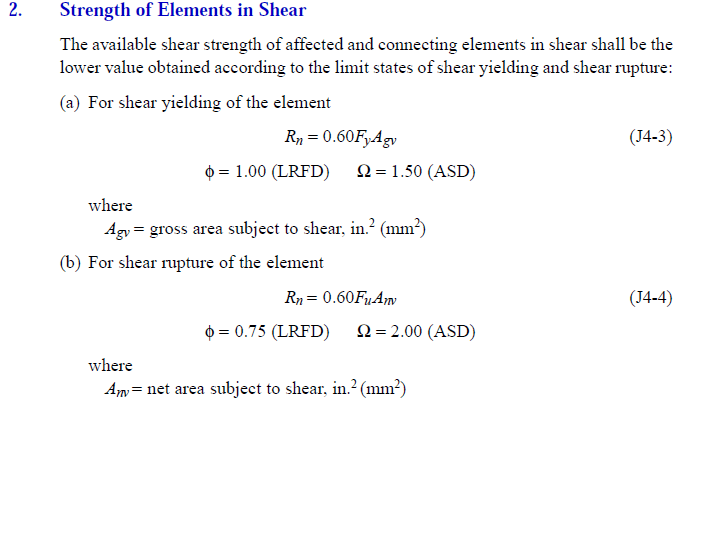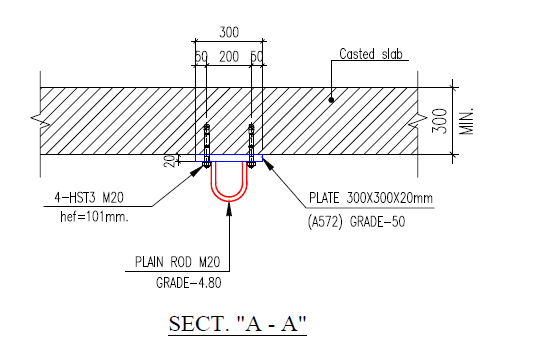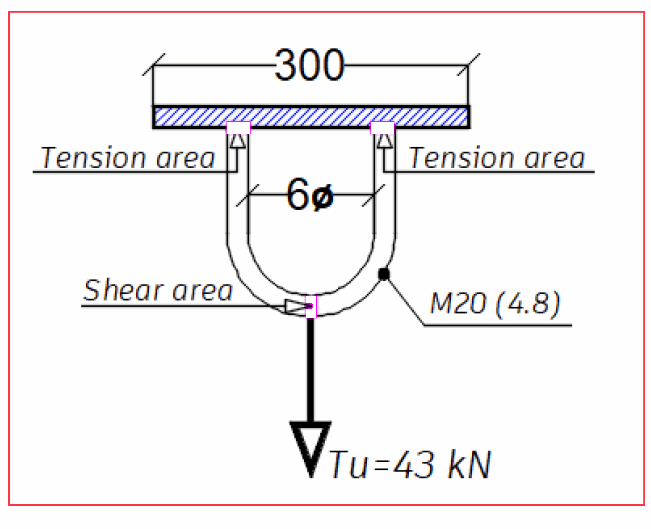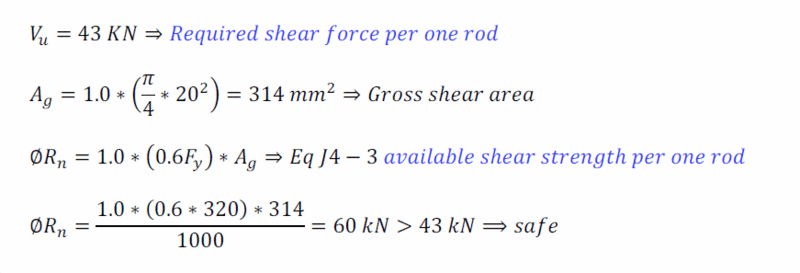HELLO
The design of rectangular bars and rounds under bending can be found in the manual as per section F11.
However, AISC-360-16 chapter G did not provide any equation when designing (rectangular bars and rounds) under shear !!
I have searched the manual of steel design by SAP2000 V24.1 and I found that SAP2000's manual provided equation G2-1 to solve this issue without any reference as per attached!!!!.
Kindly I need a Professional reply.
The design of rectangular bars and rounds under bending can be found in the manual as per section F11.
However, AISC-360-16 chapter G did not provide any equation when designing (rectangular bars and rounds) under shear !!
I have searched the manual of steel design by SAP2000 V24.1 and I found that SAP2000's manual provided equation G2-1 to solve this issue without any reference as per attached!!!!.
Kindly I need a Professional reply.





